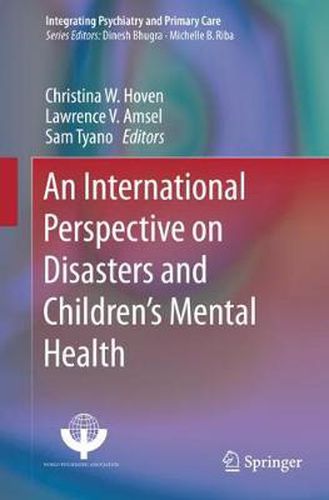Readings Newsletter
Become a Readings Member to make your shopping experience even easier.
Sign in or sign up for free!
You’re not far away from qualifying for FREE standard shipping within Australia
You’ve qualified for FREE standard shipping within Australia
The cart is loading…






This book provides a broad international perspective on the psychological trauma faced by children and adolescents exposed to major disasters, and on the local public health response to their needs. An outstanding quality of the book is that it draws upon the experience of local researchers, clinicians, and public mental health practitioners who dedicated themselves to these children in the wake of overwhelming events. The chapters address exemplary responses to a wide variety of trauma types, including severe weather, war, industrial catastrophes, earthquakes, and terrorism. Because disasters do not recognize geographic, economic, or political boundaries, the chapters have been selected to reflect the diverse global community’s attempt to respond to vulnerable children in the most challenging times. The book, thus, examines a diverse range of healthcare systems, cultural settings, mental health infrastructure, government policies, and the economic factors that have played an important role in responses to traumatic events. The ultimate goal of this book is to stimulate future international collaborations and interventions that will promote children’s mental health in the face of disaster.
$9.00 standard shipping within Australia
FREE standard shipping within Australia for orders over $100.00
Express & International shipping calculated at checkout
This book provides a broad international perspective on the psychological trauma faced by children and adolescents exposed to major disasters, and on the local public health response to their needs. An outstanding quality of the book is that it draws upon the experience of local researchers, clinicians, and public mental health practitioners who dedicated themselves to these children in the wake of overwhelming events. The chapters address exemplary responses to a wide variety of trauma types, including severe weather, war, industrial catastrophes, earthquakes, and terrorism. Because disasters do not recognize geographic, economic, or political boundaries, the chapters have been selected to reflect the diverse global community’s attempt to respond to vulnerable children in the most challenging times. The book, thus, examines a diverse range of healthcare systems, cultural settings, mental health infrastructure, government policies, and the economic factors that have played an important role in responses to traumatic events. The ultimate goal of this book is to stimulate future international collaborations and interventions that will promote children’s mental health in the face of disaster.